Don't wanna be here? Send us removal request.
Text
The Importance of Personal Trainers Redwood City in Injury Prevention and Recovery
Injuries are an unfortunate part of life, especially for those who regularly engage in physical activity. Whether you’re a seasoned athlete or just starting out at the gym, injuries can set back your progress and cause frustration. This is where personal trainers come in—they play a critical role in both injury prevention and recovery. By offering expert guidance, personalized programs, and constant support, personal trainers ensure that you can exercise safely, effectively, and confidently.
In this blog, we’ll explore the importance of Personal Trainers Redwood City in preventing injuries and helping individuals recover from them.

Understanding Proper Form and Technique
One of the leading causes of gym-related injuries is improper form and technique during exercises. Whether it’s lifting weights, performing squats, or using gym machines, incorrect posture and movement can lead to strains, sprains, and more severe injuries over time. Personal trainers are trained professionals who understand the biomechanics of the body and can ensure that you’re performing each exercise safely.
Customized Exercise Plans Based on Your Needs
Every person’s body is different, and each has unique strengths, weaknesses, and limitations. Some may have weaker joints, while others could be dealing with muscle imbalances or previous injuries. Generic workout routines don’t account for these individual differences, which can increase the likelihood of injury. A personal trainer, however, tailor workout plans to your specific needs and capabilities.

Strengthening Weak Areas
Muscle imbalances or weak areas in your body can create a greater risk of injury, especially when you perform high-intensity exercises. For example, weak glutes or core muscles can lead to back injuries, while underdeveloped muscles in the shoulders may cause shoulder strain during lifting exercises. A personal trainer can help identify and target these weaknesses, creating a balanced program that strengthens your entire body.
Injury Prevention for Specific Sports or Activities
Different sports or activities come with their own sets of common injuries. Runners may suffer from shin splints or knee problems, while weightlifters might experience back or shoulder injuries. Personal trainers with specialized knowledge can help prevent injuries related to your specific activity by focusing on exercises that strengthen the muscles and joints needed for those movements.

The Role of Trainers in Injury Recovery
Recovering from an injury is a delicate process that requires professional guidance. Jumping back into your regular routine too quickly can aggravate the injury or cause a new one. Personal trainers who specialize in injury recovery can help you rebuild strength and mobility safely while avoiding further damage. They work in conjunction with physical therapists or doctors to ensure a seamless recovery process.
Conclusion
Injuries can be frustrating, but they don’t have to be inevitable. Personal trainers play a crucial role in keeping your workouts safe and productive by teaching proper technique, designing customized programs, and guiding you through recovery when injuries do occur.
0 notes
Text
What Makes Personal Training Sessions Redwood City Special and Different?
In a world where fitness options abound—from online classes to self-guided workouts—it can be challenging to decide the best path to achieve your health goals. Personal training sessions stand out in this crowded field for several reasons.
Whether you’re new to exercise or a seasoned gym-goer, Personal Training Sessions Redwood City can you provide unique benefits that set it apart from other fitness methods.

Heres what makes personal training sessions special and different:
Flexibility and Convenience
Personal training sessions are incredibly flexible, allowing you to schedule workouts at times that suit your lifestyle. Whether you prefer morning sessions before work or evening workouts after a busy day, your trainer can accommodate your schedule. Additionally, many trainers offer online or in-home sessions, providing even more convenience for those with demanding schedules or limited access to a gym.
Adaptability for All Fitness Levels
Whether you’re a beginner or an advanced athlete, personal training is adaptable to your needs. Trainers can modify exercises to match your current fitness level and gradually increase the difficulty as you progress. They can also work with individuals recovering from injuries or dealing with chronic conditions, ensuring that you stay active while accommodating any physical limitations.

Comprehensive Health and Wellness Support
Personal training goes beyond just workouts. Many trainers offer holistic health and wellness support, including advice on nutrition, sleep, stress management, and overall lifestyle habits.
This comprehensive approach helps you make sustainable changes that improve your overall well-being, not just your physical fitness.
Building Confidence and Overcoming Obstacles
Working with a personal trainer can boost your confidence, especially if you're new to exercise or returning after a long break. Trainers provide guidance and support that can help you overcome mental barriers, such as fear of failure or intimidation in the gym. As you see your progress, your confidence grows, making it easier to stay committed to your fitness journey.

Varied and Enjoyable Workouts
Boredom is a common reason people abandon their fitness routines. Personal trainers keep workouts varied and engaging, introducing new exercises and techniques to keep things fresh. Whether its incorporating fun equipment like kettlebells or trying out new workout styles like HIIT or circuit training, your trainer ensures that your sessions are never monotonous.
Conclusion
Personal training sessions offer a unique, personalized experience that goes beyond what you can achieve on your own or in group classes. The tailored workouts, expert guidance, motivation, and flexibility make personal training an invaluable investment in your health and fitness.
0 notes
Text
Secure and Powerful Exercises – Injury Counteraction with the Assistance of Fitness coaches Redwood City
A 12-week body transformation plan at the gym can be a powerful way to improve your fitness, strength, and physique. Here's a general guide to help you achieve your goals:
1. Define Your Goals
Fat Loss: Focus on higher reps, moderate weights, and more cardio.
Muscle Gain: Emphasize strength training with heavier weights and fewer reps.
General Fitness: Combine both cardio and strength training.
2. Nutrition

Caloric Intake:
Fat Loss: Create a caloric deficit (eat fewer calories than you burn).
Muscle Gain: Create a caloric surplus (eat more calories than you burn).
Balanced Diet: Focus on whole foods, lean proteins, complex carbs, and healthy fats.
Protein: Aim for 1.2 to 2.2 grams of protein per kilogram of body weight daily.
Hydration: Drink plenty of water throughout the day.
3. Workout Plan
Weeks 1-4: Foundation Building
Day 1: Upper Body Strength
Bench Press: 4 sets of 8-10 reps
Pull-Ups or Lat Pulldowns: 4 sets of 8-10 reps
Shoulder Press: 4 sets of 8-10 reps
Dumbbell Rows: 4 sets of 10 reps
Tricep Dips: 3 sets of 12 reps
Bicep Curls: 3 sets of 12 reps
Day 2: Lower Body Strength
Squats: 4 sets of 8-10 reps
Deadlifts: 4 sets of 6-8 reps
Lunges: 3 sets of 10 reps per leg
Leg Press: 3 sets of 10-12 reps
Calf Raises: 4 sets of 15 reps
Day 3: Active Rest or Cardio
30-45 minutes of moderate cardio (e.g., jogging, cycling, swimming)
Day 4: Full Body Circuit
Deadlift: 3 sets of 10 reps
Bench Press: 3 sets of 10 reps
Squats: 3 sets of 10 reps
Pull-Ups: 3 sets of 8-10 reps
Plank: 3 sets of 60 seconds
Day 5: Core & Cardio

Plank: 3 sets of 60 seconds
Russian Twists: 3 sets of 20 reps
Leg Raises: 3 sets of 15 reps
30 minutes of HIIT (High-Intensity Interval Training)
Day 6: Rest or Light Activity
Engage in light activities like walking or stretching.
Day 7: Rest
Weeks 5-8: Strength & Hypertrophy
Increase weights and intensity in your workouts.
Follow a similar split but focus on lifting heavier and lowering reps slightly (6-8 reps).
Add variety by incorporating machines and different exercises (e.g., cable machines, leg curls).
Weeks 9-12: Final Push
Day 1: Push Day (Chest, Shoulders, Triceps)
Bench Press: 5 sets of 5 reps
Overhead Press: 4 sets of 6 reps
Tricep Dips: 4 sets of 10 reps
Lateral Raises: 3 sets of 12 reps
Push-Ups: 3 sets to failure
Day 2: Pull Day (Back, Biceps)
Deadlift: 5 sets of 5 reps
Pull-Ups: 4 sets of 6-8 reps
Barbell Rows: 4 sets of 6-8 reps
Bicep Curls: 3 sets of 10 reps
Face Pulls: 3 sets of 12 reps
Day 3: Leg Day
Squats: 5 sets of 5 reps
Leg Press: 4 sets of 8-10 reps
Lunges: 3 sets of 12 reps
Romanian Deadlifts: 4 sets of 8-10 reps
Calf Raises: 5 sets of 12 reps
Day 4: Rest
Day 5: Full Body Circuit
Same as in weeks 1-4 but with increased weight and intensity.
Day 6: Core & Cardio
Focus on HIIT and core exercises.
Day 7: Rest

4. Recovery
Sleep: Aim for 7-9 hours of quality sleep per night.
Stretching: Incorporate stretching or yoga sessions to improve flexibility and reduce injury risk.
Rest Days: Take them seriously to allow your muscles to recover.
5. Progress Tracking
Measurements: Track your body measurements, weight, and body fat percentage every 2-4 weeks.
Photos: Take progress photos every 4 weeks to visually track changes.
Strength Levels: Record your lifts and aim to increase them over time.
6. Stay Consistent
Consistency is key. Stick to your plan, stay disciplined with your diet, and make adjustments as needed based on your progress.
Would you like to customize this plan further based on specific goals or preferences?
0 notes
Text
Gym in Redwood City CA - Expert Tips on Pre & Post Workout Meal Nutrition
Whether you’re hitting the gym for a high-intensity workout, a strength training session, or a relaxing yoga class, what you eat before and after your exercise can significantly impact your performance, recovery, and overall results.
Proper nutrition around your workouts at helps maximize your energy levels, enhance muscle recovery, and improve overall fitness gains. In this blog, we'll explore expert tips on pre and post workout meal nutrition to help you make the most of your Gym in Redwood City CA sessions.
Pre-Workout Nutrition: Fuel Up for Success

Timing Matters
When to Eat: Ideally, you should eat your pre-workout meal about 1-2 hours before you exercise. This timing allows your body to digest and convert the food into usable energy.
Quick Tips: If you’re short on time, a small snack 30-60 minutes before your workout can still be effective. Just make sure it’s easy on your stomach and not too heavy.
Focus on Carbohydrates
Why Carbs? Carbohydrates are your body’s primary source of energy during exercise. Consuming carbs before your workout helps replenish glycogen stores and provides sustained energy.
What to Eat: Opt for easily digestible carbs such as whole grain toast, oatmeal, bananas, or a piece of fruit. For those needing more substantial energy, a balanced meal with brown rice or sweet potatoes can be beneficial.
Include Lean Proteins
Why Protein? Protein supports muscle repair and growth. Including a moderate amount of protein in your pre-workout meal can help prepare your muscles for the demands of exercise.
What to Eat: Choose lean proteins like chicken, turkey, Greek yogurt, or a protein shake. For a balanced pre-workout snack, consider combining protein with carbs, such as apple slices with almond butter.

Don’t Forget Healthy Fats
Why Fats? While fats should be consumed in moderation pre-workout, they can provide a longer-lasting energy source and help with overall satiety.
What to Eat: Opt for healthy fats such as avocados, nuts, or seeds. Just keep portions small to avoid digestive discomfort.
Post-Workout Nutrition: Recovery and Replenishment
Prioritize Protein
Why Protein? After a workout, your muscles need protein to repair and rebuild. Consuming protein shortly after exercise can help kickstart the recovery process and support muscle growth.
What to Eat: Incorporate high-quality protein sources such as lean meats, fish, eggs, or plant-based proteins like beans and lentils. A protein shake or smoothie can also be a convenient option.
Replenish Carbohydrates
Why Carbs? Exercise depletes glycogen stores, so it’s essential to replenish them with carbohydrates. This helps restore energy levels and aids in recovery.
What to Eat: Choose complex carbs like quinoa, sweet potatoes, or whole grain pasta. Fruits like berries or a banana can also provide quick-digesting carbs post-workout.

Rehydrate and Restore Electrolytes
Why Hydration? Rehydrating after a workout is crucial for recovery and maintaining overall bodily functions. Electrolytes lost through sweat need to be replaced.
What to Drink: Water is essential, but for longer workouts or intense sessions, consider drinks with electrolytes like coconut water or sports drinks. You can also incorporate hydrating foods such as watermelon or cucumbers into your post-workout meal.
Conclusion
Optimizing your pre and post workout nutrition can make a significant difference in your exercise performance and recovery. By focusing on a balanced intake of carbohydrates, proteins, and healthy fats, and staying hydrated, you can enhance your energy levels, support muscle repair, and achieve your fitness goals more effectively.
0 notes
Text
Gym in Redwood City CA - How to Stay Fit During Heavy Workouts
Staying fit while engaging in heavy workouts at the gym requires a balanced approach that includes proper nutrition, adequate rest, and mindful exercise techniques.
Whether you’re a seasoned athlete or just starting your fitness journey at the Gym in Redwood City CA, these tips will help you maximize your efforts and maintain your health and well-being.

Warm-Up Properly
Before diving into intense exercises, its crucial to prepare your body. A proper warm-up increases your heart rate, enhances blood flow to muscles, and reduces the risk of injury. Spend 10-15 minutes on dynamic stretches and light cardio to get your body ready for the workout ahead.
Focus on Nutrition
Your diet plays a significant role in how well you perform and recover from heavy workouts. Ensure you’re fuelling your body with the right nutrients:
Carbohydrates: Provide energy for intense workouts.
Proteins: Aid in muscle repair and growth.
Fats: Essential for long-term energy and overall health.
Hydration: Drink plenty of water before, during, and after your workout to stay hydrated and maintain optimal performance.
Maintain Proper Form

Using correct form is critical to preventing injuries and ensuring that you’re targeting the right muscle groups. If you’re unsure about your technique, consider working with a personal trainer or watching instructional videos. Always start with lighter weights to perfect your form before progressing to heavier loads.
Incorporate Rest Days
Rest days are just as important as workout days. They allow your muscles to recover and grow, reducing the risk of overuse injuries. Incorporate at least one or two rest days into your weekly routine and consider lighter activities like yoga or walking on these days to keep your body active.
Cool Down and Stretch
After completing your workout, take the time to cool down and stretch. This helps to gradually lower your heart rate and prevent stiffness. Spend at least 10 minutes on static stretches, focusing on the major muscle groups you worked during your session.
Use Proper Equipment

Using the right equipment can make a big difference in your workout effectiveness and safety. Ensure you’re using weights, machines, and other gym equipment correctly and consider investing in supportive footwear and workout attire that enhances your performance and comfort.
Seek Support and Stay Motivated
Surround yourself with a supportive community, whether its workout buddies, gym staff, or an online fitness group. Sharing your journey with others can provide encouragement, accountability, and tips for staying on track. Stay motivated by tracking your progress, trying new workouts, and reminding yourself of your fitness goals.
Conclusion
Staying fit during heavy workouts at the gym involves a holistic approach that includes proper preparation, nutrition, technique, and recovery. By following these tips, you can maximize your gym efforts, stay healthy, and achieve your fitness goals safely and effectively. Remember, fitness is a journey, and maintaining a balanced and mindful approach will lead to long-term success.
0 notes
Text
Body Transformation through Personal gym Trainer
A personal gym trainer is a fitness professional who provides individualized guidance, support, and motivation to help clients achieve their fitness goals. They design personalized workout programs based on clients' fitness levels, goals, and any specific needs or limitations. Here are some key aspects of what a personal gym trainer does:
1. Assessment:
Initial Consultation: Assess the client's fitness level, health history, and personal goals.
Fitness Tests: Conduct physical assessments to measure strength, flexibility, endurance, and body composition.
2. Program Design:

Personalized Plans: Create tailored workout programs that address the client's specific needs and goals.
Variety: Include a mix of exercises to target different muscle groups and prevent boredom.
3. Guidance:
Exercise Instruction: Demonstrate proper form and technique for each exercise.
Safety: Ensure clients perform exercises safely to avoid injury.
4. Motivation and Support:
Encouragement: Provide constant motivation and support to keep clients engaged and committed.
Accountability: Help clients stay on track with their fitness routines.
5. Progress Tracking:

Regular Check-ins: Monitor progress through regular assessments and adjust the program as needed.
Goal Setting: Help clients set realistic and achievable goals.
6. Nutritional Advice:
Basic Guidance: Offer general advice on healthy eating and nutrition to complement the workout program.
Referrals: Refer clients to dietitians or nutritionists for more specialized dietary plans.
7. Specialized Training:
Rehabilitation: Work with clients recovering from injuries, in collaboration with healthcare providers.
Sports-Specific Training: Design programs for athletes focusing on specific skills and conditioning.
8. Certifications and Continuing Education:

Qualified Trainers: Hold certifications from recognized fitness organizations (e.g., NASM, ACE, ISSA).
Continuous Learning: Stay updated with the latest fitness trends and research through continuing education.
Benefits of Hiring a Personal Trainer:
Personalized Attention: Tailored workouts that meet individual needs.
Efficiency: Maximizes workout time with effective exercises.
Motivation: Keeps clients motivated and accountable.
Expertise: Access to professional knowledge and skills.
Support: Provides encouragement and emotional support.
Do you have specific questions or need advice on finding a personal gym trainer in redwood City?
0 notes
Text
Gym in Redwood City CA – Common Fitness Exercises
Whether you’re new to the gym or a seasoned fitness enthusiast, understanding the most common exercises and how to perform them correctly can greatly enhance your workout experience.
Here’s a guide to some of the most popular exercises you’ll encounter at the Gym in Redwood City CA, each targeting different muscle groups to help you achieve a balanced and effective workout.

1. Squats
Muscles Worked: Quadriceps, Hamstrings, Glutes
Squats are a fundamental lower body exercise that helps build strength and endurance in your legs and glutes. They can be performed with a barbell, dumbbells, or just your body weight.
2. Deadlifts
Muscles Worked: Hamstrings, Glutes, Lower Back, Core
Deadlifts are a powerhouse exercise that targets multiple muscle groups, making them a staple in many strength training routines.
3. Bench Press
Muscles Worked: Chest, Shoulders, Triceps
The bench press is a key exercise for building upper body strength, specifically targeting the chest, shoulders, and triceps.
4. Pull-Ups
Muscles Worked: Back, Shoulders, Biceps
Pull-ups are an excellent bodyweight exercise for developing upper body strength, particularly in the back and arms.

5. Planks
Muscles Worked: Core, Shoulders
Planks are a core-strengthening exercise that also engages your shoulders, back, and glutes.
6. Lunges
Muscles Worked: Quadriceps, Hamstrings, Glutes Lunges are great for building leg strength and improving balance and coordination.
7. Shoulder Press
Muscles Worked: Shoulders, Triceps
The shoulder press, whether performed with dumbbells, a barbell, or a machine, is key for developing upper body strength.
8. Bicep Curls
Muscles Worked: Biceps
Bicep curls isolate and build strength in the biceps, which is important for various upper body movements.

9. Triceps Dips
Muscles Worked: Triceps, Shoulders
Triceps dips are effective for targeting the triceps and also engage the shoulders and chest.
10. Leg Press
Muscles Worked: Quadriceps, Hamstrings, Glutes
The leg press machine allows you to work your leg muscles with a different range of motion compared to squats.
Conclusion
Incorporating these common fitness exercises into your gym routine can help you build strength, improve endurance, and achieve a well-rounded physique. Remember to focus on the proper form to prevent injuries and maximize effectiveness. As always, consider consulting with a fitness professional to tailor these exercises to your individual needs and goals. Happy lifting!
0 notes
Text
Why It’s Never Too Late to Hire a Personal Trainer Redwood City at the Gym?
Whether you’re a fitness enthusiast looking to break through a plateau, someone who has never set foot in a gym, or an older adult seeking to improve your health, hiring a personal trainer can be a game-changer.
Many people hesitate to seek professional help, thinking they’ve missed the boat or that personal trainers are only for the young and athletic. However, it’s never too late to hire a Personal Trainer Redwood City. Here’s why getting professional guidance can benefit you at any stage of life.

Fitness Plans
One of the most significant advantages of working with a personal trainer is the creation of a personalized fitness plan. Trainers assess your current fitness level, listen to your goals, and design a program tailored specifically to you. Whether you’re starting from scratch, dealing with an injury, or aiming to achieve a specific milestone, a customized plan can make your fitness journey more effective and enjoyable.
Correct Form and Technique
Proper form and technique are crucial in preventing injuries and maximizing the effectiveness of your workouts. This becomes even more important as you age, as the risk of injury can increase. Personal trainers provide hands-on guidance to ensure you are performing exercises correctly, which helps protect your joints and muscles from strain. This knowledge is invaluable and can transform the way you approach fitness.

Comprehensive Health Benefits
Engaging in regular physical activity with the guidance of a personal trainer can lead to comprehensive health benefits. Strength training, cardio workouts, and flexibility exercises can help improve cardiovascular health, enhance muscle strength, boost metabolism, and improve balance and coordination. These benefits are essential for maintaining independence and quality of life as you age.
Mental Health and Well-Being
Exercise is not only good for the body but also for the mind. Physical activity has been shown to reduce symptoms of depression and anxiety, improve mood, and enhance cognitive function. Personal trainers can help create a balanced workout regimen that supports mental health, providing a holistic approach to well-being.

Building Confidence
For those who are new to the gym or have been away from exercise for a long time, stepping into a fitness environment can be intimidating. A personal trainer can help build your confidence by providing support, guidance, and encouragement. As you become more comfortable with your workouts and see improvements, your self-confidence will grow.
Conclusion It’s never too late to hire a personal trainer and take control of your fitness journey. Whether you’re aiming to improve your health, enhance your physical performance, or simply learn how to exercise safely and effectively, a personal trainer can provide the guidance and support you need.
0 notes
Text
Exercises for Lower Back Pain Recommended by Personal Trainers Redwood City
Lower back pain is a common issue that affects millions of people worldwide. Whether it’s due to poor posture, a sedentary lifestyle, or an injury, this discomfort can significantly impact your daily life. Fortunately, there are effective exercises recommended by personal trainers that can help alleviate and prevent lower back pain.
These exercises focus on strengthening the core, improving flexibility, and promoting proper posture. Here’s a guide to some of the best exercises recommended by Personal Trainers Redwood City for lower back pain.

Pelvic Tilts
How to Do It:
Lie on your back with your knees bent and feet flat on the floor.
Tighten your abdominal muscles and push your lower back into the floor.
Hold for a few seconds, then relax.
Benefits:
Pelvic tilts help to gently stretch and strengthen the lower back and abdominal muscles, which can reduce pain and improve stability.
Cat-Cow Stretch
How to Do It:
Start on your hands and knees in a tabletop position.
Inhale, arch your back (cow position), and lift your head and tailbone toward the ceiling.
Exhale, round your back (cat position), and tuck your chin and tailbone under.
Benefits:
The Cat-Cow stretch improves flexibility and mobility in the spine, relieving tension and promoting better alignment.

Bridges
How to Do It:
Lie on your back with your knees bent and feet flat on the floor.
Tighten your abdominal muscles and lift your hips off the floor, forming a straight line from your shoulders to your knees.
Hold for a few seconds, then lower your hips back to the floor.
Benefits:
Bridges target the glutes, hamstrings, and lower back muscles, helping to build strength and support for the lower back.
Knee-to-Chest Stretch
How to Do It:
Lie on your back with your knees bent and feet flat on the floor.
Bring one knee to your chest, holding it with both hands.
Hold the stretch for 15-30 seconds, then switch legs.
Benefits:
This stretch helps to elongate the lower back muscles, relieving tension and promoting flexibility.

Hip Flexor Stretch
How to Do It:
Kneel on your right knee with your left foot in front, forming a 90-degree angle. Push your hips forward, feeling a stretch in your right hip flexor.
Hold for 15-30 seconds, then switch sides.
Benefits:
Stretching the hip flexors can alleviate lower back pain caused by tightness in these muscles, which often results from prolonged sitting.
Conclusion Incorporating these exercises into your routine can help manage and alleviate lower back pain. However, it’s essential to perform them correctly to avoid further injury. Consulting a personal trainer or physical therapist can provide you with personalized guidance and ensure you’re doing the exercises safely and effectively.
0 notes
Text
The Role of Personal Training Sessions Redwood City for Athletes
In the competitive world of sports, athletes are always looking for an edge to improve their performance and stay ahead of the competition. One of the most effective ways to achieve this is through personal training sessions.
These customized sessions offer numerous benefits that can enhance athletic performance, prevent injuries, and provide a tailored approach to training that addresses the unique needs of each athlete. In this blog, we'll explore the pivotal role Personal Training Sessions Redwood City play for athletes.
Personalized Training Programs
Customized Workouts

Personal trainers create workout programs that are specifically designed to meet the individual needs of an athlete. This includes tailoring exercises to improve sport-specific skills, enhance strength, increase endurance, and correct any imbalances or weaknesses
Goal Setting and Progress Tracking
Personal trainers help athletes set realistic, measurable goals and track their progress over time. This focused approach ensures continuous improvement and keeps athletes motivated and accountable.
Enhancing Athletic Performance
Sport-Specific Training
Athletes benefit from training programs that are tailored to their specific sport. Whether it's improving a runner's stride, enhancing a swimmer's stroke, or boosting a basketball player's vertical leap, personal trainers design workouts that directly translate to better performance on the field, track, court, or pool
Advanced Techniques and Equipment
Personal trainers have access to advanced training techniques and specialized equipment that may not be available in a general gym setting. This includes plyometric exercises, resistance bands, agility ladders, and more, which can significantly enhance an athlete's performance.
Mental Toughness and Motivation

Mental Conditioning
Personal trainers not only focus on the physical aspects of training but also on the mental aspects. They help athletes develop mental toughness, resilience, and the focus needed to excel in their sport.
Consistent Motivation
Having a personal trainer provides athletes with consistent motivation and encouragement. Trainers push athletes to go beyond their limits, helping them to achieve their full potential.
Nutritional Guidance
Customized Nutrition Plans
Personal trainers often provide guidance on nutrition, which is crucial for athletic performance. They can create personalized nutrition plans that ensure athletes get the right balance of macronutrients and micronutrients to fuel their training and recovery.
Flexibility and Adaptability
Adaptable Training Schedules

Personal trainers offer flexible training schedules that can accommodate an athlete's busy lifestyle. Whether it's early morning sessions or late-night workouts, trainers work around the athlete's commitments to ensure consistent training.
Adjusting to Progress and Setbacks
As athletes progress or encounter setbacks, personal trainers adjust the training program accordingly. This adaptability ensures that athletes continue to make progress and overcome any challenges that arise.
Conclusion
Personal training sessions play a crucial role in the development and success of athletes. By providing personalized training programs, enhancing athletic performance, preventing injuries, and offering mental and nutritional support, personal trainers help athletes reach their full potential.
0 notes
Text
Why You Should Consider Taking Personal Training Sessions Redwood City
While the gym offers a plethora of equipment and classes, knowing how to navigate it all effectively can be challenging. This is where personal training sessions come in. Personal trainers can provide the guidance, support, and expertise needed to help you achieve your fitness goals more efficiently and safely.
Here are several compelling reasons why you should consider taking Personal Training Sessions Redwood City.

Personalized Workout Plans
One of the biggest advantages of hiring a personal trainer is the personalized workout plan. Unlike generic programs, a personal trainer designs a plan tailored to your individual needs, goals, and fitness level. Whether you are aiming to lose weight, build muscle, improve endurance, or recover from an injury, your trainer will create a strategy that aligns with your objectives and progresses with you.
Expert Guidance and Proper Form
Proper form and technique are crucial in preventing injuries and maximizing the effectiveness of your workouts. Personal trainers are trained to teach and demonstrate the correct way to perform exercises. They provide immediate feedback and adjustments, ensuring that you execute movements safely and efficiently. This expert guidance helps you build a solid foundation and reduces the risk of long-term injury.
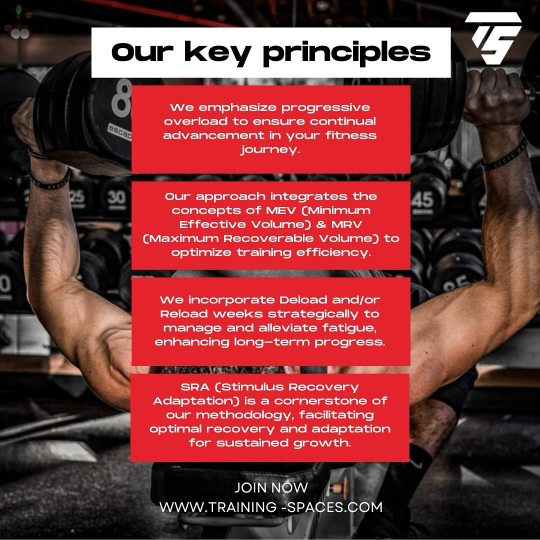
Efficient Use of Time
In today’s fast-paced world, time is a valuable commodity. Personal trainers optimize your workout time by focusing on exercises that deliver the best results within the available time frame. This efficiency ensures that you get the most out of each session, making it easier to fit regular exercise into a busy schedule.
Variety and Creativity
Repeating the same workouts can lead to boredom and plateaus in progress. Personal trainers introduce variety and creativity into your routine, keeping it engaging and challenging. They have the expertise to mix up your workouts with different exercises, equipment, and techniques, preventing monotony and promoting continuous improvement.
Nutritional Advice

Many personal trainers offer basic nutritional guidance to complement your workout plan. While they are not dietitians, they can provide helpful tips on how to fuel your body for optimal performance and recovery. This holistic approach ensures that you address both exercise and nutrition, which are key components of a healthy lifestyle.
Conclusion
Investing in personal training sessions can be one of the best decisions you make for your health and fitness journey. With personalized plans, expert guidance, and unwavering support, personal trainers help you navigate the complexities of fitness, ensuring that you reach your goals safely and efficiently.
0 notes
Text
Does Personal Trainers Redwood City Help with Diet?
Embarking on a fitness journey often involves more than just hitting the gym and following a workout routine. Achieving your fitness goals typically requires a holistic approach that includes proper nutrition.
This leads to an important question: Do Personal Trainers Redwood City help with diet? The answer is a resounding yes, and here’s how they can support you in achieving a balanced and effective diet.
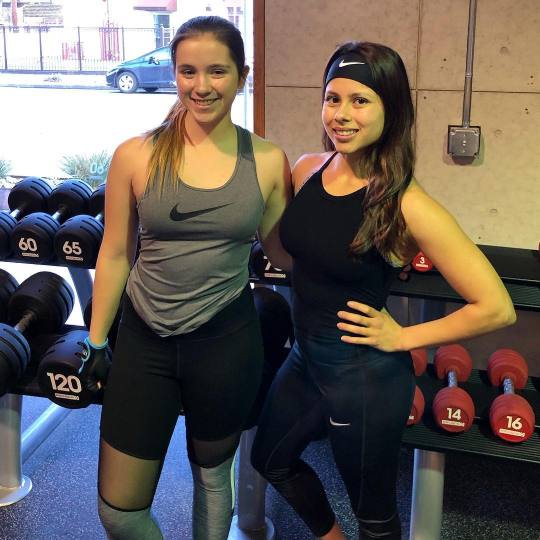
The Role of Personal Trainers
Personal trainers are fitness professionals who design and implement exercise programs tailored to individual needs and goals. While their primary focus is on physical training, many personal trainers also have a deep understanding of nutrition and recognize its critical role in overall fitness and health.
Why Nutrition is Crucial?
Proper Nutrition Is Essential For
Energy: Fuelling your body for workouts and daily activities.
Recovery: Helping muscles recover and grow after exercise.
Weight Management: Achieving and maintaining a healthy weight.
Overall Health: Supporting bodily functions and preventing diseases.
How Personal Trainers Assist with Diet
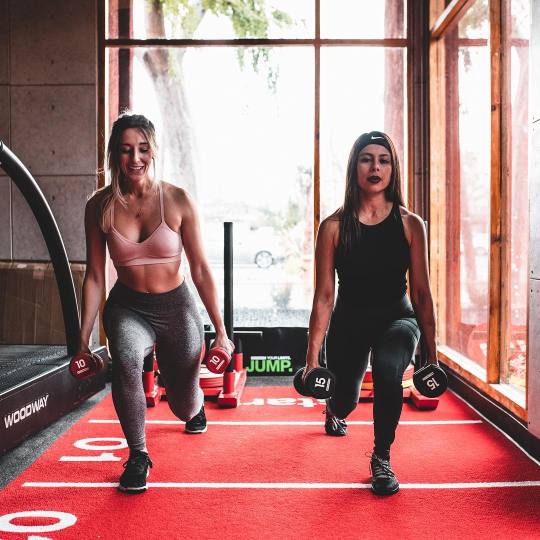
1. Personalized Nutrition Plans
Personal trainers often provide customized nutrition plans tailored to your specific fitness goals, whether it’s losing weight, building muscle, or enhancing overall health. These plans consider your dietary preferences, lifestyle, and any medical conditions you may have.
2. Nutritional Education
Understanding the basics of nutrition is crucial for making informed food choices. Personal trainers can educate you about macronutrients (proteins, fats, carbohydrates) and micronutrients (vitamins and minerals). They help you understand how these nutrients affect your body and performance.
3. Meal Planning and Prepping
To make healthy eating more manageable, trainers might assist with meal planning and prepping. This includes creating grocery lists, suggesting recipes, and providing tips on how to prepare nutritious meals quickly and efficiently.

4. Monitoring and Adjustments
As you progress in your fitness journey, your nutritional needs may change. Personal trainers can monitor your diet and make necessary adjustments to ensure you continue to see results. This might involve tweaking portion sizes, meal timing, or food choices based on your progress and feedback.
Conclusion
Personal trainers can indeed help with diet, offering valuable guidance and support to ensure your nutrition complements your fitness efforts. By working with a knowledgeable trainer, you can achieve a balanced approach to health and wellness that encompasses both exercise and proper nutrition. Whether you’re aiming to lose weight, build muscle, or improve your overall health, a personal trainer can be a crucial ally in your journey to a healthier you.
0 notes
Text
4 Workouts to Add to Your Morning Gym in Redwood City CA Routine
Are you looking to kickstart your day with a burst of energy and focus? Incorporating morning workouts into your routine could be the game-changer you've been searching for. Not only do they rev up your metabolism and set a positive tone for the day ahead, but they also enhance your overall well-being.
If you're ready to elevate your morning Gym in Redwood City CA routine, here are four workouts you should consider adding:

Cardio Blast
Cardiovascular exercise is an excellent way to wake up your body and mind. Start your morning gym session with a cardio blast to get your heart pumping and blood flowing. Whether it's running on the treadmill, cycling, or jumping rope, aim for at least 20-30 minutes of moderate to high-intensity cardio. Not only does this improve your cardiovascular health, but it also boosts your mood by releasing endorphins, leaving you feeling invigorated and ready to tackle the day.
Strength Training
Strength training is crucial for building muscle mass, increasing metabolism, and improving overall strength and endurance. Incorporating compound exercises such as squats, deadlifts, and bench presses into your morning routine engages multiple muscle groups simultaneously, maximizing efficiency. Aim for a full-body workout that targets different muscle groups each day to ensure balanced development and prevent overtraining.
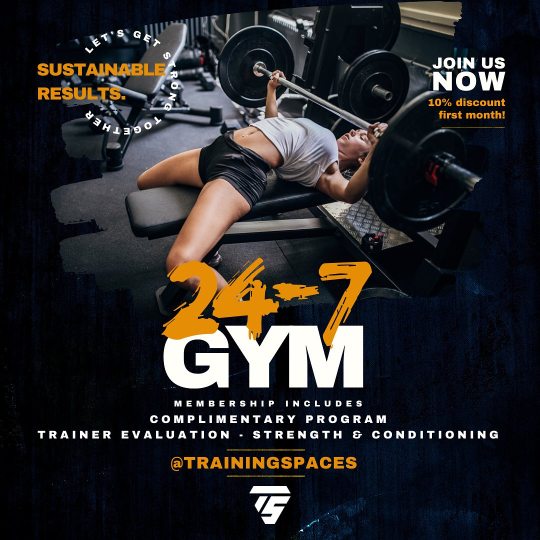
Yoga or Pilates
Adding a yoga or Pilate’s session to your morning gym routine can work wonders for both your body and mind. These low-impact exercises focus on improving flexibility, balance, and core strength while promoting relaxation and stress relief. Practicing yoga poses or Pilates movements in the morning helps awaken your body gently, promoting better posture and alignment throughout the day.
High-Intensity Interval Training (HIIT)
For those seeking a quick yet effective workout, HIIT is the way to go. HIIT involves alternating between short bursts of intense exercise and brief periods of rest or low-intensity recovery. This type of training not only torches calories and boosts metabolism during the workout but also continues to burn calories post-exercise due to the afterburn effect.
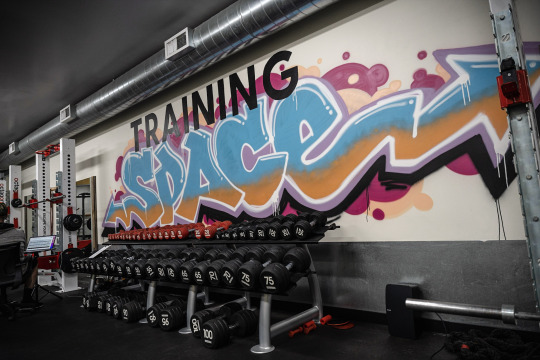
Conclusion
Incorporating these four workouts into your morning gym routine can transform your day from the moment you wake up. Whether you prefer cardio to get your heart pumping, strength training to build muscle, yoga or Pilates to enhance flexibility and mindfulness, or HIIT for a quick and efficient workout, there's something for everyone.
0 notes
Text
The Power of Small Group Training Sessions with Personal Trainers Redwood City
Embarking on a fitness journey can be daunting, but it doesn't have to be a solitary endeavour. Small group training sessions with personal trainers offer a dynamic and supportive environment where individuals can thrive together.
In this blog, we'll explore the myriad benefits of small group training and how the guidance of Personal Trainers Redwood City can elevate your fitness experience to new heights.
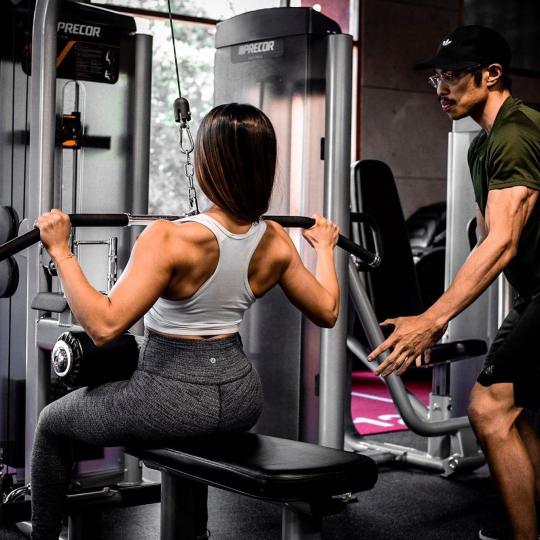
Personalized Attention in a Group Setting
Small group training combines the best of both worlds: the camaraderie and motivation of working out with others and the personalized attention and expertise of a personal trainer. While traditional group fitness classes may lack individualized instruction, small group training sessions typically involve a lower trainer-to-client ratio, allowing for more personalized guidance and feedback. Trainers can tailor exercises, intensity levels, and modifications to accommodate each participant's fitness level, goals, and limitations, ensuring a safe and effective workout for everyone.
Social Interaction and Connection
Humans are inherently social beings, and the social aspect of small group training can make workouts more enjoyable and fulfilling. Exercising alongside like-minded individuals who share similar goals and aspirations can foster a sense of belonging and camaraderie. Small group training sessions provide opportunities for social interaction, mutual encouragement, and shared experiences, strengthening bonds and fostering friendships among participants. Whether you're high-fiving after completing a challenging set or cheering each other on during a tough workout, the sense of community and connection in small group training can make the fitness journey more enjoyable and sustainable.
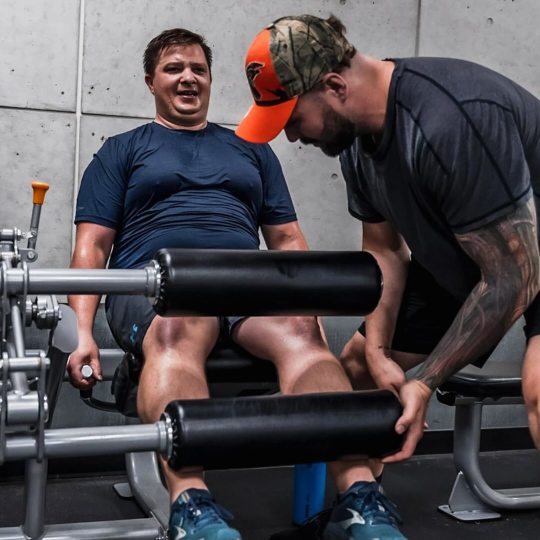
Cost-Effective and Time-Efficient
Small group training sessions offer a cost-effective alternative to one-on-one personal training, making expert guidance more accessible to a wider audience. By sharing the cost of the session among participants, individuals can enjoy the benefits of personalized training at a fraction of the cost of private sessions.
Variety and Fun
Small group training sessions often incorporate a variety of exercises, equipment, and training modalities to keep workouts engaging, challenging, and fun. Whether it's circuit training, functional movements, partner drills, or team challenges, trainers can design creative and diverse workouts that cater to the interests and preferences of the group.
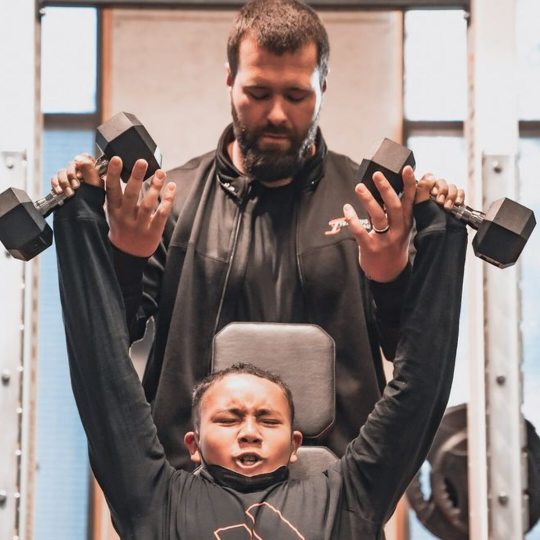
Conclusion
Small group training sessions with personal trainers offer a unique and effective approach to achieving fitness goals. From personalized attention and motivation to social interaction and variety, the benefits of small group training are plentiful.
0 notes
Text
Gym in Redwood City CA – Why Breathwork Matters in Your Workout?
In the hustle and bustle of modern fitness trends, from HIIT to CrossFit, and everything in between, one crucial element often gets overlooked: our breath. Breathwork, an ancient practice often associated with yoga and meditation, is emerging as a powerful tool to enhance physical performance and overall well-being in the gym.
So, why does breathwork matter in your workout routine, and how can you harness its potential to elevate your Gym in Redwood City CA experience? Let’s delve into the science and benefits behind this often-underrated practice.
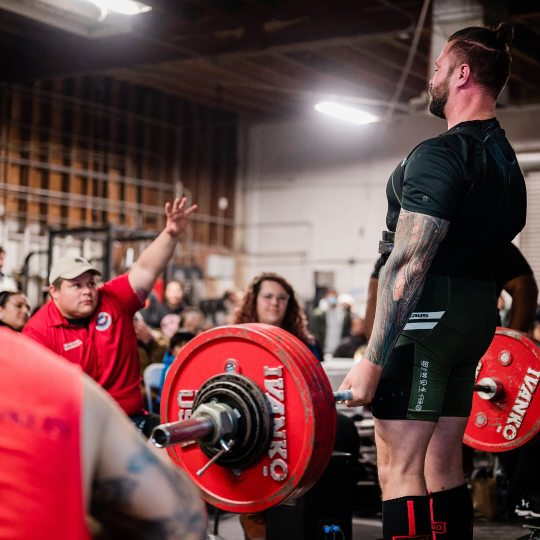
Enhancing Mind-Body Connection
Breathwork serves as a bridge between the mind and body, fostering a deeper connection that is essential for optimizing your workouts. By paying attention to your breath, you can bring mindfulness to each movement, ensuring proper form and alignment. This heightened awareness reduces the risk of injury and allows you to fully engage the targeted muscles, maximizing the effectiveness of your exercises.
Boosting Oxygenation and Energy
Conscious breathing techniques facilitate the intake of oxygen into the body, fueling your muscles and increasing endurance during workouts. Deep, diaphragmatic breathing floods your cells with oxygen, promoting better circulation and enhancing energy levels. By incorporating breathwork into your routine, you can sustain peak performance for longer durations, pushing past limitations and achieving new personal bests.

Managing Stress and Improving Recovery
The gym can be a stress-inducing environment for many, with performance pressures and hectic schedules taking a toll on both body and mind. Fortunately, breathwork offers a natural antidote to stress, activating the body’s relaxation response and calming the nervous system. By integrating moments of conscious breathing between sets or at the end of your session, you can promote faster recovery, reduce muscle tension, and leave the gym feeling rejuvenated rather than drained.
Enhancing Focus and Concentration
During a challenging workout, maintaining focus is key to staying present and pushing through fatigue. Breathwork serves as a powerful anchor for attention, allowing you to cultivate a state of flow where distractions fade away, and you become fully immersed in the present moment. By synchronizing your breath with movement, you can enter a state of heightened concentration, unlocking your full potential and achieving greater performance outcomes.

Conclusion
Breathwork is a valuable tool that has the potential to revolutionize your gym experience, enhancing physical performance, mental focus, and overall well-being. By incorporating conscious breathing techniques into your workout routine, you can tap into the transformative power of your breath, unlocking new levels of strength, endurance, and vitality.
1 note
·
View note
Text
Vital Link Between Fitness Centre Near Redwood City, Motivation & Mental Health
In the bustling realm of modern life, where stress and demands often weigh heavy, the pursuit of good health extends far beyond just physicality. It intertwines deeply with mental well-being, forming a symbiotic relationship that necessitates holistic care.
Amidst this backdrop, Fitness Centre Near Redwood City emerge not merely as spaces for physical exercise but as sanctuaries fostering motivation and nurturing mental health.
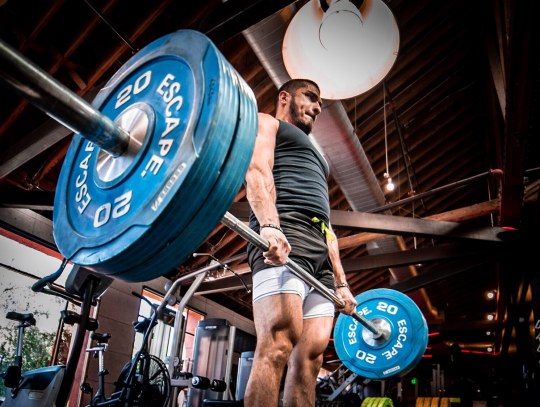
The Power of Motivation
Motivation acts as the engine driving individuals towards their fitness goals. Yet, in the ebbs and flows of daily life, it often wanes, leaving many adrift. Fitness centre’s serve as reservoirs of motivation, replenishing the dwindling resolve with an atmosphere charged with energy and purpose. The collective pursuit of health within these spaces creates a ripple effect, igniting the flames of determination in even the weariest of souls.
The Sanctuary of Support
Within the walls of fitness centres, a sense of community blossoms. Shared experiences, struggles, and triumphs forge bonds that transcend mere acquaintanceship. In this supportive environment, individuals find solace knowing they are not alone in their journey towards better health. Encouragement from peers and guidance from trainers act as pillars of strength, propelling individuals forward even when the path seems daunting.
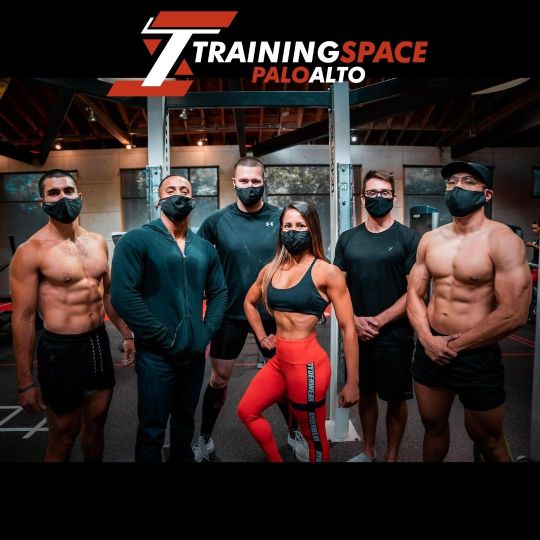
Mental Health Oasis
The benefits of physical exercise on mental health are widely acknowledged, but within fitness centres, this impact is amplified. Engaging in regular exercise releases endorphins, the body’s natural mood elevators, fostering a sense of well-being and reducing stress and anxiety. Moreover, the structured routine of gym sessions offers a reprieve from the chaos of daily life, providing a dedicated time and space for individuals to focus solely on themselves.
Breaking Barriers
For many, the journey towards fitness is fraught with internal barriers – self-doubt, insecurities, and fear of failure. Fitness centres act as crucibles for personal growth, challenging individuals to confront these barriers head-on. With every rep, every mile, individuals shatter the confines of their limitations, emerging stronger, both physically and mentally.
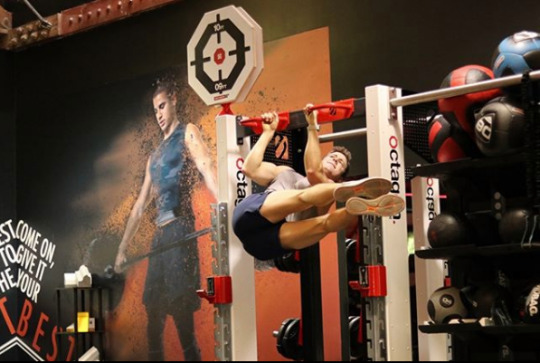
Conclusion
In a world besieged by constant demands and pressures, the significance of fitness centers transcends mere physical exercise. They emerge as bastions of motivation, sanctuaries of support, and oases of mental well-being. Within their hallowed halls, individuals embark on transformative journeys, not just towards physical fitness, but towards holistic health – body, mind, and spirit.
0 notes
Text
Redwood City Personal Trainers: Why Look for Expert Advice?
Working with a personal trainer in the gym can be a great way to reach your fitness goals. Here are a few steps to help you find the right personal trainer for you:
Determine Your Goals: Before you start looking for a personal trainer, think about what you want to achieve. Whether it's weight loss, muscle gain, improved athletic performance, or overall fitness, having clear goals will help you find a trainer who specializes in what you need.
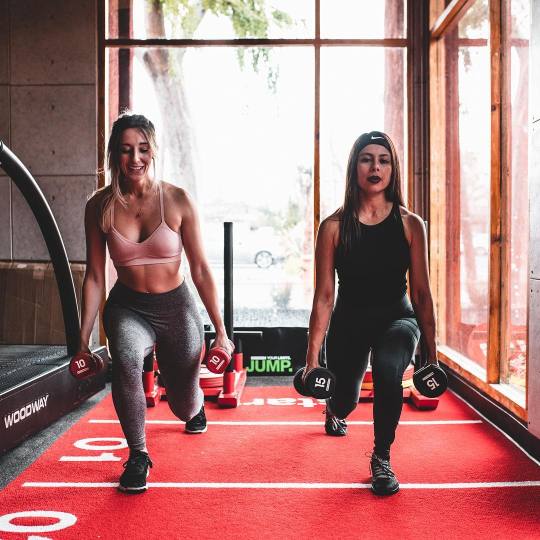
Ask for Recommendations: Talk to friends, family members, or coworkers who have worked with personal trainers before. They can give you recommendations based on their experiences.
Check Qualifications: Look for personal trainers who are certified by reputable organizations such as the National Academy of Sports Medicine (NASM), the American Council on Exercise (ACE), or the International Sports Sciences Association (ISSA). Certification ensures that the trainer has undergone training and is knowledgeable about exercise science, anatomy, and physiology.
Meet Potential Trainers: Once you've found a few potential trainers, schedule consultations with them. This will give you the opportunity to ask questions, discuss your goals, and see if you feel comfortable working with them.
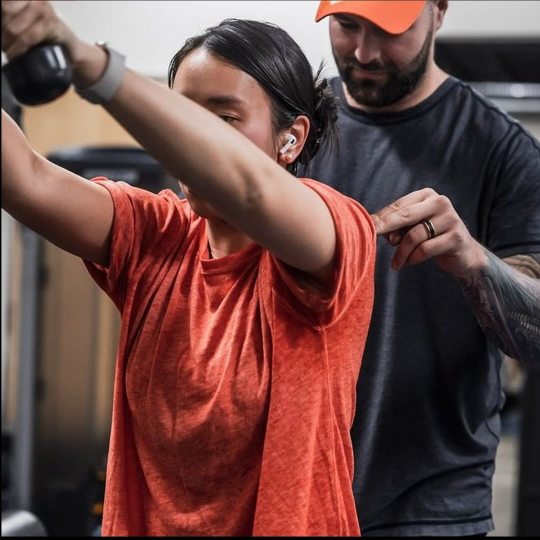
Consider Compatibility: It's important to find a personal trainer who you get along with and who understands your needs and preferences. Pay attention to their communication style, personality, and approach to training to ensure that it's a good fit for you.
Ask About Experience: Inquire about the trainer's experience working with clients who have similar goals or limitations to yours. A trainer who has experience in your specific area of interest will be better equipped to help you reach your goals.
Discuss Scheduling and Pricing: Make sure to discuss scheduling options and pricing with potential trainers. Find out if they offer packages or discounts for multiple sessions, and make sure their availability aligns with yours.
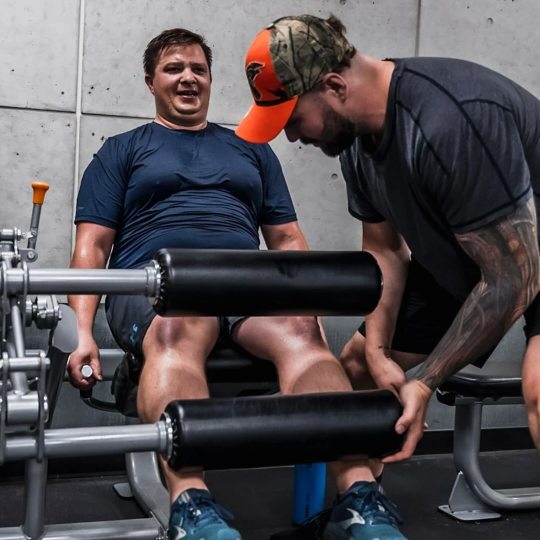
Start with a Trial Session: Before committing to a long-term training program, consider starting with a trial session to see if you enjoy working with the trainer and if their approach fits your needs.
Remember, finding the right personal trainer in Redwood City is a personal decision, so take your time to research and choose someone who you feel confident will help you achieve your fitness goals.
0 notes